If I were asked what might be the largest genre of poetry, I would likely answer “the poetry of longing.” I could likely classify a lot of poetry that’s been written as the expression of longing for what might be, for what might have been, for what is, for what can never be, for opportunities both lost and realized, even for getting what one wants (or doesn’t).
This rumination on poetry and longing started while I was reading The Road Not Taken: Finding America in the Poem Everyone Loves and Almost Everyone Gets Wrong by David Orr (more on that soon). Orr is writing about Robert Frost’s “The Road Not Taken, ” which has an interesting genesis and an even more fascinating history. Part of it partially has to do with longing, longing for the choices we do and don’t make.
Two recent collections of poetry seemed to underscore this idea of poetry and longing: Guinevere in Baltimore by Shelley Puhak and Little Spells by Jennifer K. Sweeney. The two collections are about as different as you can imagine, but the idea of longing permeates both.
Guinevere in Baltimore takes the familiar story of Camelot but moves Arthur, Guinevere and Lancelot forward about 15 centuries to contemporary Baltimore. Arthur is chairman of a corporation; Lancelot is a member of the board of directors. The poems are clearly in the specific voices of the three, caught in a love triangle. The tone of the poems is one of regret; the affair between Guinevere and Lancelot is almost inevitably continuing but the relationship has run its course.
In this poem, addressed to Arthur, Guinevere longs to return to the time before. It’s intriguing how Puhak uses the idea of an antique chest or highboy, connoting value, worth, and stability—things Guinevere longs for but knows are now impossible.
Guinevere to Arthur, on Starting Over
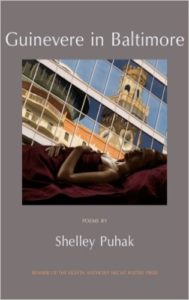
the drawing board, back to being
drawers, even, crafted to be drawn out
of some hulking antique. Let’s hunker down
into our dovetail joints – hand-hewn pins
and tails same as neurons bundled,
same as language braided at the juncture
of forest pathways: Old English dragan, to drag
this out, and Old German tragen, to carry,
to bear your long silences. Let’s slip off
into a solid maple highboy. Let’s squeak
and get stuck. In each of us there’s twilight
enough. There’s one square of darkness
framed out that each drawer is intended
for. Let’s wedge ourselves in and warp.
This is Puhak’s third poetry collection, having previously published Stalin in Aruba (2009) and The Consolation of Fairy Tales (2011). She received her MFA degree from the University of New Orleans and an MA degree from the University of Delaware. Her poems have been published in a number of literary journals, including Carolina Quarterly, FIELD, and Ninth Letter. She is a professor of creative writing at Notre Dame of Maryland University.
A significant part of Jennifer K. Sweeney’s Little Spells is, interestingly enough, devoted to fairy tales; there must be some connection between legends and fairy tales and the idea of longing.
In this collection, in addition to fairy tales, Sweeney’s poems cover a diverse array of subjects: nature, the seasons, people (one entitled “Janice Pocket” concerns a child who disappeared), learning dance, and even a blindness training center. They contain a sense of quiet, and that sense of longing, even when the object of longing may be unknown, as it is in this poem.
Tendril-minded
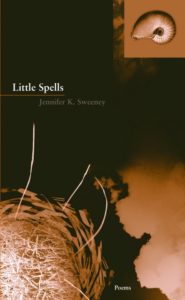
since the latest shadow jumped the tracks.
On warm days I get out for a walk,
cross a few scratching off a list.
This wasn’t how it was supposed to be
makes a bad mantra.
But all the same.
It is the everyday that haunts.
A gradual greening,
assemblage of fungus
skirting rain-clogged trunks.
The train drags its warning diagonally
through town over and over.
I peer into the woods with no need to hurry home.
See a deer in the brush, then another
until every blond branch seems to be a deer
and the herd of them gallops through
a perfectly empty river.
Little Spells is also Sweeney’s third poetry collection; her first two were Salt Memory (2006) and How to Live on Bread and Music (2009), which received the James Laughlin Award from the Academy of American Poets for an outstanding second collection. She received her MFA degree from Vermont College; she’s been a visiting writer at Kalamazoo College and taught numerous writing seminars and workshops. Her poems have been published in such journals as The Pushcart Prize Anthology, Poetry Daily, American Poetry Review, Pleaides and Verse Daily. She lives in California.
I suspect that no literature can convey longing like poetry can. Both Guinevere in Baltimore and Little Spells, as different as they are, are evidence.
Photo by Daniele Zedda, Creative Commons, via Flickr. Post by Glynn Young, author of the novels Dancing Priest and A Light Shining, and Poetry at Work.
Browse more Poetic Voices
___________________________

“How to Write a Poem is a classroom must-have.”
—Callie Feyen, English Teacher, Maryland
- Longfellow’s “Paul Revere’s Ride”: Creating a National Legend - April 17, 2025
- Poets and Poems: Katie Kalisz and “Flu Season” - April 15, 2025
- Poets and Poems: Michelle Ortega and “When You Ask Me, Why Paris?” - April 10, 2025
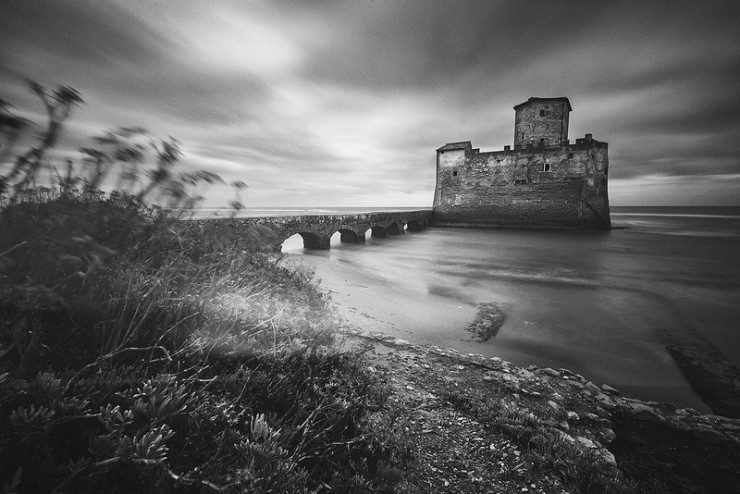
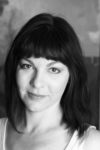
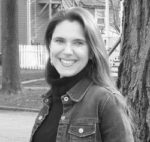
Mary Sayler says
Glynn, your posts help other poets and poetic writers appreciate and better understand poetry, so I’ll highlight this on the Christian Poets & Writers blog – http://www.christianpoetsandwriters.com. Thanks and blessings.
RickMaxson says
Another insightful review of two unique poets. I echo the statement in Mary Sayler’s post above.
Thanks once again.
Laurie Klein says
I am glad for this introduction to two new (to me) poets and the fine examples your feature here. Makes me want to read more of their work. Thank you!
LINDA REID says
ENJOYED SHELLEY PUHAK’S AND JENNIFER SWEENEY’S LONGING POEMS. I HAVE WRITTEN SOME
LONGING POEMS MYSELF. THERE’S AN ELEMENT OF NOSTALGIA ABOUT THEM THAT SEEMS
TO ADD TO THE POEM.
I ALSO LIKE TO WRITE ABOUT LIGHT AND HOW CERTAIN TIMES OF DAY THE SUNLIGHT PLAYS ON THE
WALL GIVING VERY DIFFERENT HUES AT DIFFERENT TIMES. I FIND IT VERY INTRIGUING.